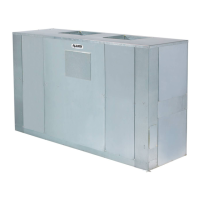Page 2
TABLE OF CONTENTS
General Page 1
Parts Arrangement Page 3
Specifications Page 4−6
Blower Data Page 6−10
Component Illustration Page 11
I Application Page 12
II Unit Components Page 12−36
VSP1 Blower Control Page 15−16
VSP2 Blower Control Page 17−19
Ignition Control Page 21−24
Blower Motor Q Units Page 29
ICM1 and ICM2 Page 30−36
III Installation Page 36−44
IV Maintenance Page 45−46
V Unit Checkout Page 46−53
VI Troubleshooting Page 54−56
VII Troubleshooting Charts Page 57−68
GC1 Ignition Control Page 57
GC3 Ignition Control Page 58
G891 Ignition Control Page 58
Electrical Checkout Page 59
Gas, Air, Spark Check Page 60
Electrical Testing Page 61
ICM2−VSP2 Page 62
ICM1−VSP1 Page 63−65
Additional Charts Page 66−68
VIII Wiring and Sequence of Operation
G21Q Page 69−70
GSR21Q Page 71−72
G21V Page 73−74
GSR21V Page 75−76
G21Q W/ GC3 Page 77−78
G21Q W/ GC1 Page 79−80
GSR21Q W/ GC3 Page 81−82
GSR21Q W/ GC1 Page 83−84
G21V W/ GC1 Page 85−86
G21V W/ GC3 Page 87−88
GSR21V W/ GC1 Page 89−90
GSR21V W/ GC3 Page 91−92
Jumper Summary Tables Page 93−99
CAUTION
Electrostatic discharge can affect electronic com
ponents. Take precautions during furnace installa
tion and service to protect the furnace’s electronic
controls. Precautions will help to avoid control ex
posure to electrostatic discharge by putting the
furnace, the control and the technician at the same
electrostatic potential. Neutralize electrostatic
charge by touching hand and all tools on an un
painted unit surface, such as the gas valve or blow
er deck, before performing any service procedure.
ELECTROSTATIC DISCHARGE (ESD)
Precautions and Procedures

